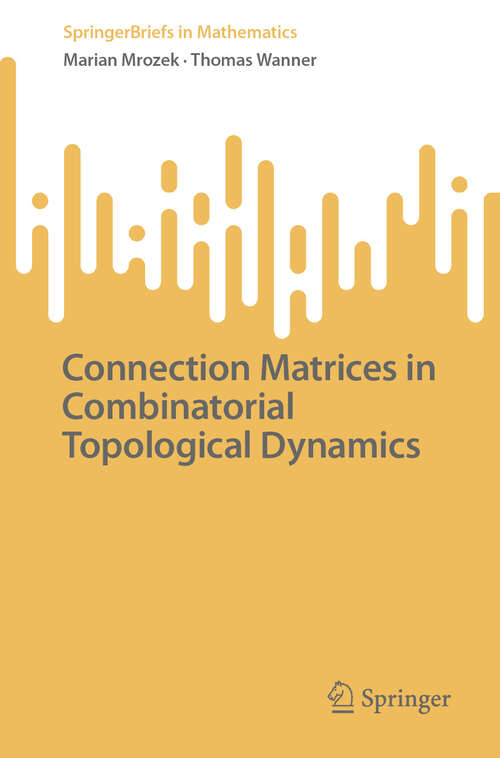Connection Matrices in Combinatorial Topological Dynamics (SpringerBriefs in Mathematics)
By: and
Sign Up Now!
Already a Member? Log In
You must be logged into Bookshare to access this title.
Learn about membership options,
or view our freely available titles.
- Synopsis
-
This book provides an introduction to the theory of connection matrices in the context of combinatorial multivector fields. The theory of connection matrices was proposed by Conley and Franzosa for classical continuous-time dynamical systems as a tool for studying connecting orbits between isolated invariant sets. It generalizes the Morse complex in Morse theory, and has found numerous applications in dynamics. Connection matrices have been and still are a challenging topic to study, as there are no complete introductory texts, and both their intricate definition and properties are scattered over numerous research papers.
In recent years, dynamical concepts have found their way into a combinatorial context. Starting with combinatorial vector fields, introduced by Forman to generalize classical Morse theory, it has been realized that this transfer of ideas can lead to important applications. Similarly, Conley's theory of isolated invariant sets has been transferred to the combinatorial setting. This, when combined with the concept of multivector fields, opens the door to a complete combinatorial dynamical theory.
In this book, we take Conley's theory one step further, by presenting a complete discussion of connection matrices for combinatorial multivector fields. While some of the results in this book are based on known approaches, we show in a detailed way how they can be carried over to the case of multivector fields on general Lefschetz complexes. Along the way, we introduce notions which are new even in the classical setting, such as a formal approach to addressing the nonuniqueness of connection matrices, as well as mechanisms for comparing connection matrices even under poset changes. Finally, we show that specifically for the case of Forman's gradient combinatorial vector fields connection matrices are necessarily unique, and can be determined explicitly in a straightforward way.
Focusing on the combinatorial theory of connection matrices has a number of advantages. On the one hand, many of the technical difficulties of the classical continuous-time dynamics situation are not present in the discrete combinatorial context. This allows us to provide a complete and informal introduction to the theory in the second section of the book. This in turn will enable the readers to construct and analyze their own examples easily. On the other hand, the complete theory, including the existence of connecting orbits in the combinatorial setting can be presented in detail, based on an explicit distinction between the algebraic and topological parts of the theory. In this way, it is our hope that this book will be an impetus for further knowledge transfer between dynamics and combinatorics, and even topological data analysis.
- Copyright:
- 2025
Book Details
- Book Quality:
- Publisher Quality
- ISBN-13:
- 9783031876004
- Related ISBNs:
- 9783031875991
- Publisher:
- Springer Nature Switzerland
- Date of Addition:
- 07/08/25
- Copyrighted By:
- The Editor
- Adult content:
- No
- Language:
- English
- Has Image Descriptions:
- No
- Categories:
- Nonfiction, Science, Mathematics and Statistics
- Submitted By:
- Bookshare Staff
- Usage Restrictions:
- This is a copyrighted book.
Reviews
Other Books
- by Marian Mrozek
- by Thomas Wanner
- in Nonfiction
- in Science
- in Mathematics and Statistics
